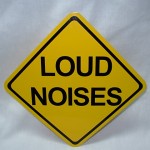Types of Noise Induced Hearing Problems
 Noise induced hearing loss (NIHL) can be temporary or permanent, but is always caused by – you guessed it – noise! People with exposure to loud noise can suffer two types of NIHL (temporary NIHL and long-term NIHL). These can be prevented by wearing form fitting ear protection, but once the damage is done, it is usually irreversible. One thing is certain, if you work in noise and YOU don’t take responsibility for protecting your hearing, you will lose some or all of it before you retire.
Noise induced hearing loss (NIHL) can be temporary or permanent, but is always caused by – you guessed it – noise! People with exposure to loud noise can suffer two types of NIHL (temporary NIHL and long-term NIHL). These can be prevented by wearing form fitting ear protection, but once the damage is done, it is usually irreversible. One thing is certain, if you work in noise and YOU don’t take responsibility for protecting your hearing, you will lose some or all of it before you retire.
Temporary NIHL
Temporary noise induced hearing loss occurs when a person is subjected to a sudden, extremely loud noise like a gun shot, explosion or fireworks display. It can also be caused by loud music at a rock concert. The symptoms can include muffled hearing, dizziness, and pain in the ear. The symptoms can last from several hours to several days. While hearing will likely return to normal, the damage usually has been done. In some cases hearing loss will be immediate and permanent .If you are exposed to these sounds often, it will lead to a degree of permanent hearing loss.
Long-term NIHL
Long-term noise induced hearing loss happens when a person has been exposed to continuous loud noises over a long period of time. Often long-term NIHL usually occurs in a noisy workplace environment. Common industries where employees report long-term NIHL are manufacturing, music, mining, transportation, railway and construction. But recreational activities like snowmobiling, mowing the lawn, and woodworking, and even blow drying hair can cause long-term NIHL. Long-term hearing loss symptoms appear gradually. Sounds may be muffled or a person may have trouble hearing in a restaurant or public place with a lot of background noise.
How Can My Hearing Be Protected?
Wearing hearing protection can help but only if it is sufficient for the noise you are in and worn effectively. While we often can’t control the noise in our environment, we can control how we deal with the noise. We recommend everyone who has frequent exposure to noisy situations, whether on the job or at home, wear custom hearing protection. Sure, we recommend it because we are a hearing protection company, but we also care about everyone’s hearing, and for over 30 years it’s been our goal to help prevent noise induced hearing loss before it’s too late.
Learn More About Custom Hearing Protection for You and Your Company
800-520-0220 or email us below
[formidable id=2 title=true description=true]
